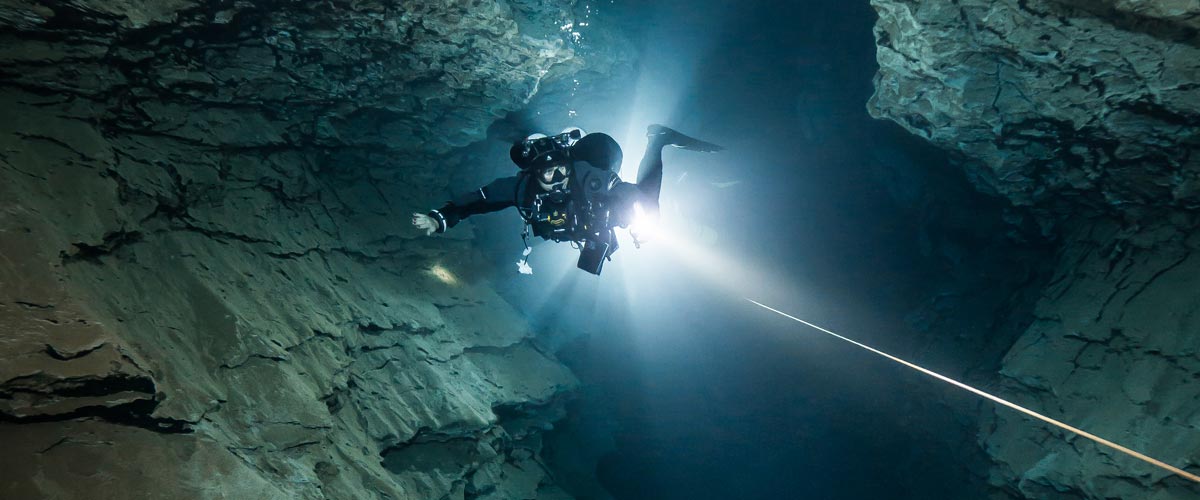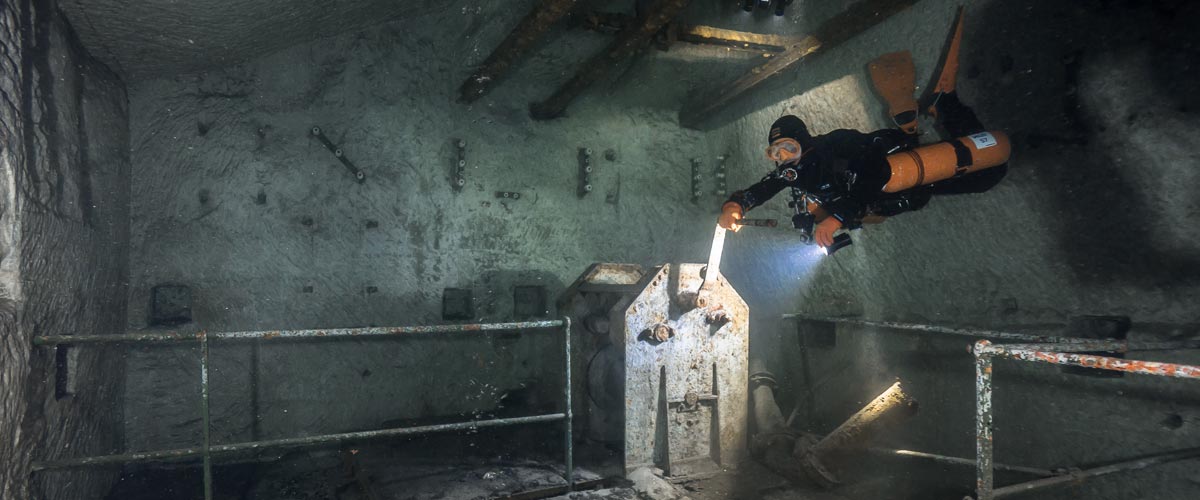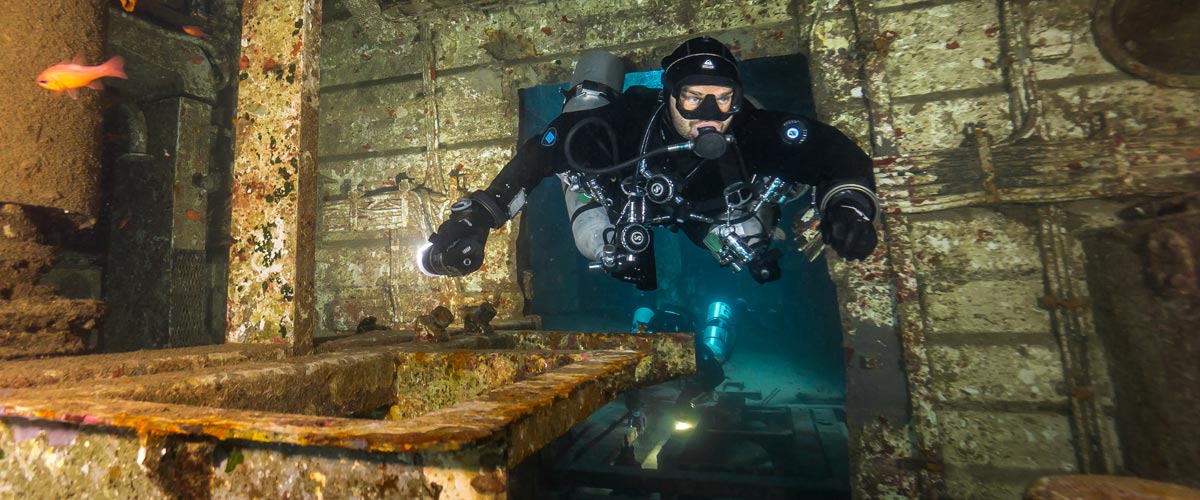Dive Training Blogs
Sidemount Divers Going ‘Back’ to Backmount
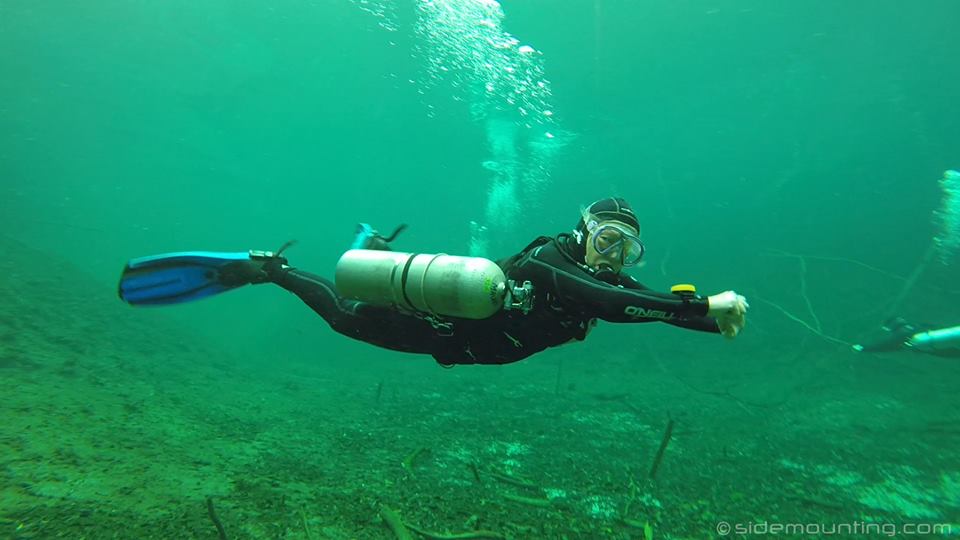
Okay I know the contents of this article are going to come as a shock for most of you. Please take the time to read this article in full; it may save your back – literally!!
After much debate I finally decided to write this article, as in the last 6 months I have received an increased amount of emails from divers all over the world, telling me that they have taken training with a sidemount instructor and after training they find sidemount is not working for them… and they are thinking of going back to backmount!
Before we get into this, I personally do not think any particular piece of sidemount equipment or training agency is to blame for what is happening. What I am putting it down to is the quality of the actual sidemount training divers are receiving from their chosen sidemount instructor.
Having re-looked at many of the emails I received and replied to, I noticed many similarities in what problems the divers where having, which hopefully I will explain by you reading this article.
Most common problems
- Sidemount equipment doesn’t feel stable enough and is too much hassle to use in the water, so I stick to a twinset for technical diving as it is easier & safer.
- Steve – having reviewed your online videos, I can’t dive sidemount like you or your students seem to, you make it look easy!! Here are some pics; can you tell me what am I doing wrong..?
- I have taken sidemount training, and since I spent time looking at your website, I now feel that I didn’t get much from my sidemount training & instructor.
- Comparing to what I see on your pictures and video, my tank trim is horrible and is constantly causing distraction to me during the dive, how do I fix this..?
- On the surface I can’t float upright, do you find it a problem too…?
- I have approx 20 dives in sidemount now; I just added my deco cylinders and find the whole thing task loading compared to using backmount. I must be doing something wrong, can you advise me..? I am confident with a twinset!!
- Once I added my cylinders I was grossly over-weighted and felt like I had just started diving again, is this to be expected..?
- I think the sidemount system I use is the problem, Steve what do you think to this system vs. this other system and then what about if I then change this bit and alter this bit etc..?
My feedback to the above
- Their course duration was too short (just 1 or 2 days); this is not enough time spent learning sidemount correctly (3 to 4 day minimum).
- Usually a poor configuration of all sidemount equipment in respect to what is being used, its setup & how the skills are being performed.
- There were too many students on the course (should be max of 3).
- The sidemount instructor they had was lacking actual experience diving in sidemount; most likely they received poor or no training themselves.
- Technical diving using sidemount can be more difficult and problematic than say using a backmounted twinset. This is due to sidemount’s flexibility and higher demand on correct cylinder configuration, valves, SM system, hose routing and skill sets from each diver. That said, done right it is far superior to backmount!
- With sidemount equipment everything makes a difference; your bungee tension, cylinders & cylinder valves used, height of cylinder band placement, cord & bolt snap lengths, your body size, fin choice… the list goes on.
- It is true I will always favour and recommend a sidemount system to you; it will be the one I believe is the best on the market at the time. I will only let you use a system that doesn’t compromise or interfere with the training I offer you.
- A lot of people are surprised and didn’t think we would need the 4 full days but believe me, everybody does. I want you to leave me knowing exactly how to use sidemount for the diving you do. I will spend enough time building the right skill sets with you, so you continue to stay in sidemount after training!!
Please note: Answers to those questions above and many more can be found in the FAQ’s section on my website (view here).
Is it hard to find a good sidemount instructor?
I think it is easy to tell what kind of sidemount instructor they are. If they are claiming to be the best at everything and just recently jumped on the “sidemount band wagon”, I’d question if you would get good training from them and if they were worth choosing as your sidemount instructor.
Basically, do your research! I suggest you look at how much time that instructor actually spends diving in sidemount; are they offering sidemount courses because they really believe in the configuration and the “art of sidemount diving”, or do they just do it because it’s cool and because sidemount has a lot of interest and media exposure at the moment?
You get what you pay for!
Sidemount diving is growing at an exploding rate; we are hearing about people trying side mount and starting to see it everywhere. This means that as soon as divers hear about or see sidemount for the first time, they of course want to try it and find out what all the buzz is about!
Sadly this has meant that many instructors just want to be seen offering the latest thing and get another credential (sidemount instructor rating) as it is the new cool thing to offer and a way to make some quick cash.
These same “sidemount instructors” don’t care about their own reputation and the damage their cheap, low valve sidemount courses have on the dive industry and people like myself who have dedicated the last few years of their career to the development of sidemount diving.
I hope this article makes student divers looking to learn sidemount think carefully about who they choose to spend their money with.
I hope all sidemount instructors who are reading this really question if what they are offering is of good enough value and whether their sidemount students continue to use sidemount after their training with them. If not, and your students have gone back to backmount, please STOP teaching until you are able to offer better training. It is your reputation that will suffer, along with all the divers you train thinking sidemount doesn’t work!
Here’s something to think about:
If I was to line up ten cave divers that use backmounted equipment from different parts of the world right now and compared all their equipment, you will find that what they are wearing, how their equipment is configured and how they perform their skills are all very similar (Google: Hogarthian System).
This was not the case back in 1990; the same cave divers back then would all have different BCD, regulator and hose configurations. The reason they all changed to what we have today is because what we have now is well tried and tested – it works and it’s safe.
Sidemount is currently in the 1990 stage of development again; everyone has their own idea about what works and what doesn’t. There are a few of us (including myself) that would argue what we offer and teach now is very standardised. I don’t think it will take the rest of the world 20 years catch up; I think it will only take another two or three years at the most.
What I am talking about is refining in the following areas:
- The way we configure our sidemount systems, modular valves waist clip system.
- Correct hose routing, so every piece compliments the next.
- No additional equipment (e.g. adding a stage interferes with initial skills learnt).
- Minimalist approach to sidemount equipment (less is more!).
- Using the correct cylinders for correct exposure suits.
- The list goes on…
The problem with finding something you’re truly passionate about – it becomes heartbreaking for me to see sidemount being offered so badly by others, especially when you hear about the dropout rate of divers going back to backmount.
I want to reassure all people reading this that sidemount diving does in fact work and I believe with the right training, I can guarantee sidemount can be superior to diving in backmount; in fact, I will stick my reputation on it!
Remember to keep updated by clicking LIKE on Steve’s Facebook Page: www.facebook.com/sidemounting
Blogs
Intro to Tech: What is it about?
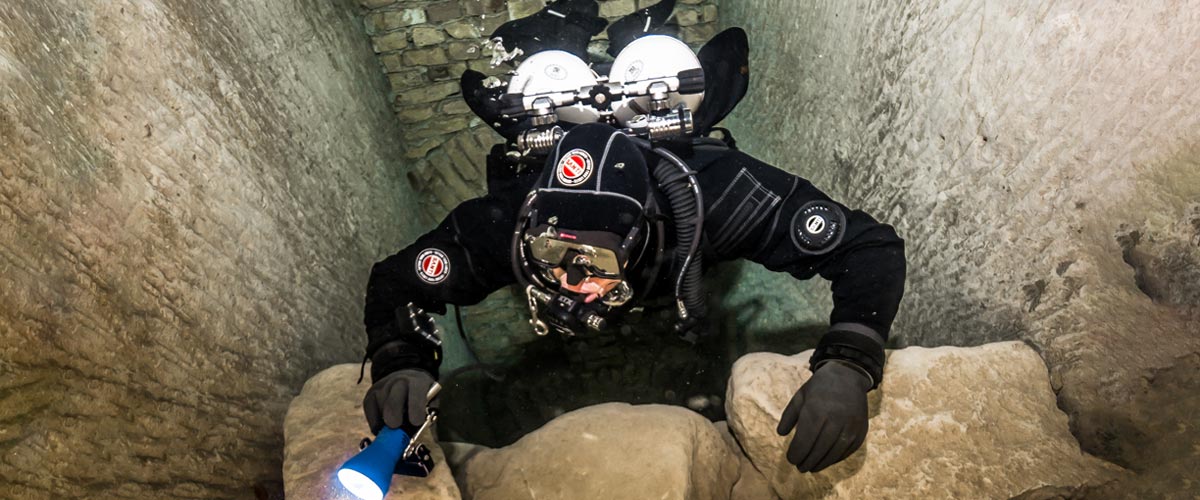
Article by José Pablo Mir
Pictures by Cezary Abramowski
The world of technical diving is exciting. It opens the door to new sites, depths, and bottom times. More importantly, it opens our minds to a new way of planning, facing, and experiencing dives, even those not purely technical.
Becoming a technical diver is a process, and like in other aspects of life, we should find the proper entry point that suits us best based on our knowledge and experience. The Introduction to Technical Diving course from TDI -the world’s largest and most recognized technical diving teaching organization- is the best option for divers who have yet to gain experience in the fundamental aspects of this new practice. The course’s content and its embrace of new techniques and technologies make it possible to acquire a solid foundation to learn and gain experience in this practice properly.
Becoming a technical diver is not something that happens overnight, whether deciding to become one or receiving a certification card stating we are now technical divers. It is a slow process extending farther away than any introductory course. It requires effort and dedication. But it will bring us satisfaction from day one -or two.
It is a matter of mentality
First, we must understand and accept that technical diving, involving greater depths, longer bottom times, exotic gases, virtual or real ceilings, and more, comes with higher levels of risk than the sport diving we have been practicing until now.
Although this discussion usually starts with a warning about risks, as I’ve done in the previous sentence, our practice is not a game of chance.
Technical diving is a rational activity that requires maturity and good judgment, and we will put everything into ensuring that each dive is a successful one -meaning we return from it safe and sound. With this understanding, we will strive to establish a mental attitude more aligned with our practice and its realities.
This new “technical diver” mindset we will develop will lead us to be more cautious in our executions, more analytical in our plans, more rational in our strategies, and more detailed in our procedures.
Experience will keep teaching us to know ourselves better, to keep our anxiety and other emotions under control, and to manage our impulses. Over time, our senses will sharpen, and we will be more attentive to the particulars of the situation we find ourselves in.
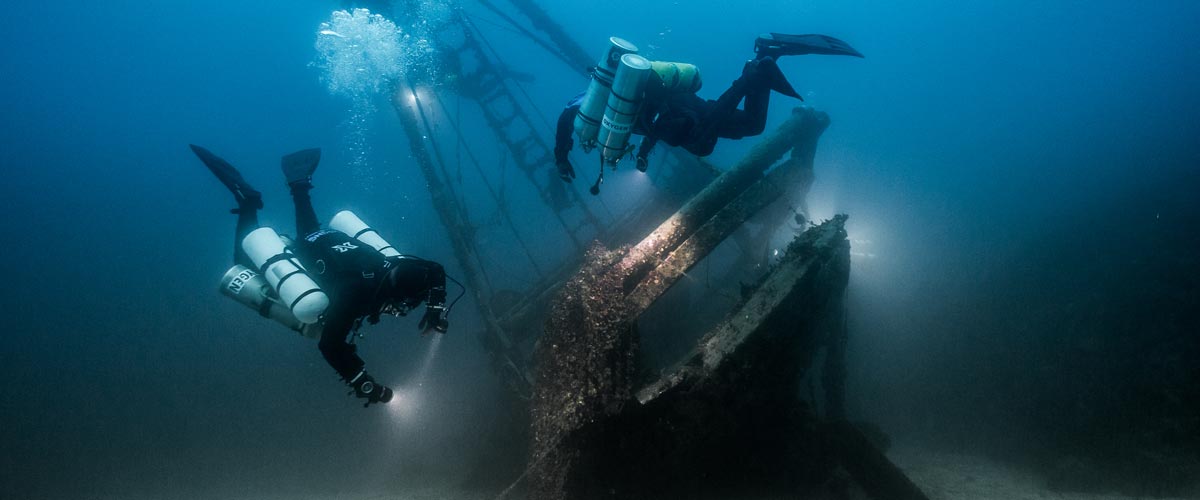
Strategies and procedures
Our strategies, those broad guiding lines tracing the path to follow, from how to approach planning to where, with what, and how we are willing to get there, will be more specific and more practical. Not because they magically become so, but because we will consciously and deliberately frame them that way.
We will establish clear, concise, and realistic procedures. Not only for the undesirable situations that may present themselves but also for those that are part of our dive objectives.
Even though, as technical divers, we often use equipment different from what we were previously accustomed to, it is essential to note that the gear does not make the diver. In a way, we could consider such equipment as the necessary tools to implement what our goal seeks to achieve, according to our strategies and procedures.
Technique plays an important role
We must put our greatest effort into learning and perfecting the different techniques we will be acquiring. Buoyancy, trim, propulsion, cylinder handling, deploying DSMBs and lift bags, valve drills, and more are essential skills we must begin to master to progress in our art. What we cannot do, when we need to do it, can harm us.
Our techniques must be effective and achieve the purpose for which they were devised. But they must also be efficient and require the least resources possible, including the time they take and the effort they demand. Effectiveness and efficiency will prevail over beauty and other considerations that may come to mind, although none of them should be mutually exclusive. A technique executed efficiently and effectively tends to have an inherent beauty.
Refining techniques is a lifelong mission. Some of them will be easy to master from the go; others, on the other hand, will be our life mission and will require many repetitions just to resemble the idea we have in mind of how they should be executed.
We must consider the environment
Our learning, the needs and musts of the practice we engage in, the experience we gradually gain, our strategies and procedures, and even our equipment and tools change with the environment.
Diving in the ocean, everything about us must be suitable for ocean dives. Conditions there rarely emulate those found in a pool, lake, or river. Variable winds and currents, greater depths, visibility conditions, other divers with uncertain skills around us, marine life, maritime traffic, distance from the coast, and many other factors add complexity and uncertainty.
It is never necessary to master the pool on the first day, but planning and aspiring to gradually cope with the ocean’s conditions is essential.
The cost of good training
We are aware that our resources are often scarce in relation to the possibilities of use we could give them if they were not. To a greater or lesser extent, we are part of the economic reality in which we are embedded.
Fortunately, the cost of good technical diver training is not an entry barrier. Comparing training and equipment costs, we see that the former are generally lower. Yes, lower cost for personalized service, essential to our future
performance and safety, than for a series of mass-produced products that are mere, albeit necessary, tools for an end.
The value of good training
The value of the training we received encompasses a range of characteristics, from emotional and methodological to technical and technological. TDI and its Introduction to Technical Diving course offer a deep and modern approach, with a teaching strategy that aims to create thinking divers, not merely obedient ones.
As technical divers, our knowledge is our primary tool. In this type of activity, what we don’t know can harm us.
Is this course optional?
Unfortunately, the fact that this Introduction to Technical Diving course is not a prerequisite for any subsequent training is an invitation to consider it optional. And we all know what usually happens to “optional” under budget constraints.
However, this course should be seen as optional only by those divers who are somehow familiar with the use of technical equipment, who have a mindset more in line with the requirements of this type of diving, who plan and execute the dives the proper “technical” way, who know their gas consumption rate, who are not intimidated by non-decompression tables, who feel comfortable using their dive computers, and know the techniques and have at least an acceptable level of buoyancy, positioning, and propulsion. Those can go straight to a more advanced training course, such as TDI’s Advanced Nitrox.
We must ask ourselves whether or not we are in that group.
Remember our goal: to have fun
Recreational diving is our passion. Jumping into the water carrying heavy equipment and having properly dotted our I’s and crossed our T’s have only one ultimate goal: fun. This is the activity we have chosen as a hobby. We must enjoy it; it must give us pleasure and make us vibrate.
Having a good time is not optional!
Blogs
Four opportunities to go pro in 2024 with Dive Friends Bonaire
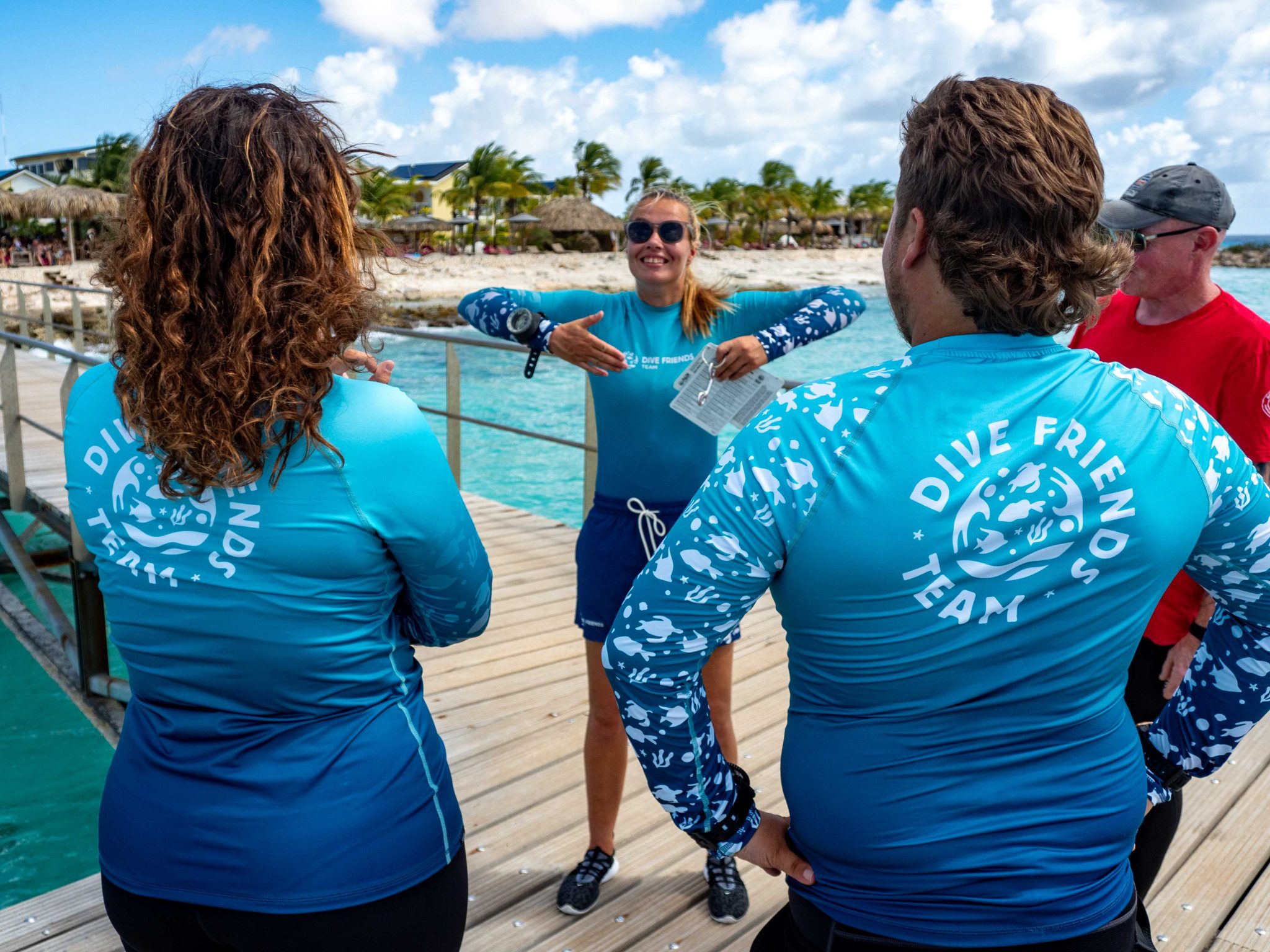
Dive Friends teaches the Instructor Development Course (IDC) several times a year to students who are eager to share their passion for diving with the world.
Dive Friends is known for the personal approach throughout the course. Their in-house course director will lead the students through every essential step, mentoring them to achieve their fullest potential as a dive instructor.
Applications for the following IDC start dates are now open:
- 12 April
- 5 July,
- 20 September
- 29 November
Partnership with Casita Palma
If the student opts for the IDC-Deluxe or IDC-Supreme package, their accommodation will be arranged for them at Casita Palma. This small and quiet resort is within walking distance from Dive Friends Bonaire’s main dive shop location and has everything you need to relax after an intense day of IDC training. Breakfast is included, so the student will always be fuelled and ready for their day.
Contact Dive Friends Bonaire’s Course Director Eddy for more information: coursedirector@divefriendsbonaire.com.
-

 News3 months ago
News3 months agoHone your underwater photography skills with Alphamarine Photography at Red Sea Diving Safari in March
-

 News2 months ago
News2 months agoCapturing Critters in Lembeh Underwater Photography Workshop 2024: Event Roundup
-

 Marine Life & Conservation Blogs2 months ago
Marine Life & Conservation Blogs2 months agoCreature Feature: Swell Sharks
-

 Blogs2 months ago
Blogs2 months agoMurex Resorts: Passport to Paradise!
-

 Blogs2 months ago
Blogs2 months agoDiver Discovering Whale Skeletons Beneath Ice Judged World’s Best Underwater Photograph
-

 Gear News3 months ago
Gear News3 months agoBare X-Mission Drysuit: Ideal for Both Technical and Recreational Divers
-

 Gear Reviews2 months ago
Gear Reviews2 months agoGear Review: Oceanic+ Dive Housing for iPhone
-

 Marine Life & Conservation2 months ago
Marine Life & Conservation2 months agoSave the Manatee Club launches brand new webcams at Silver Springs State Park, Florida















